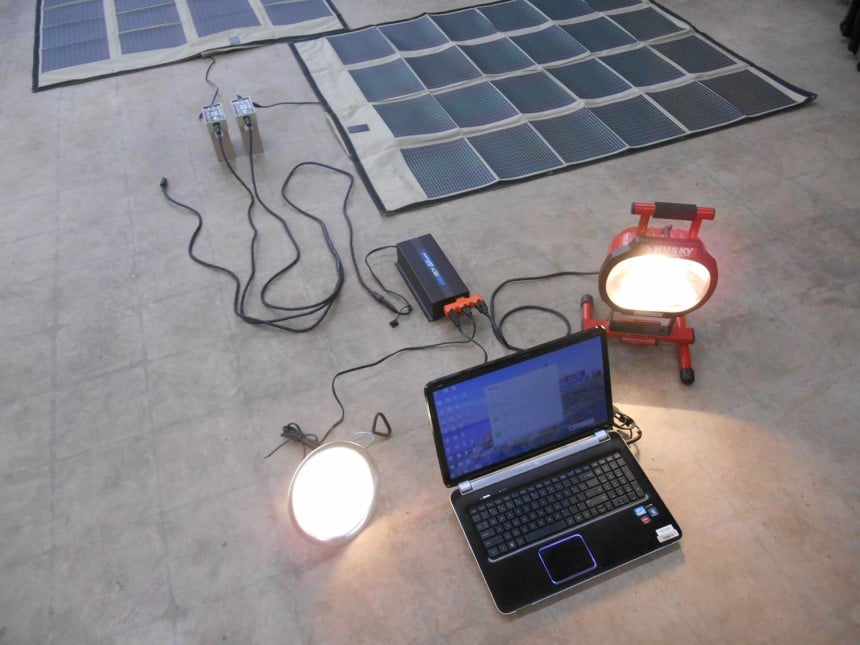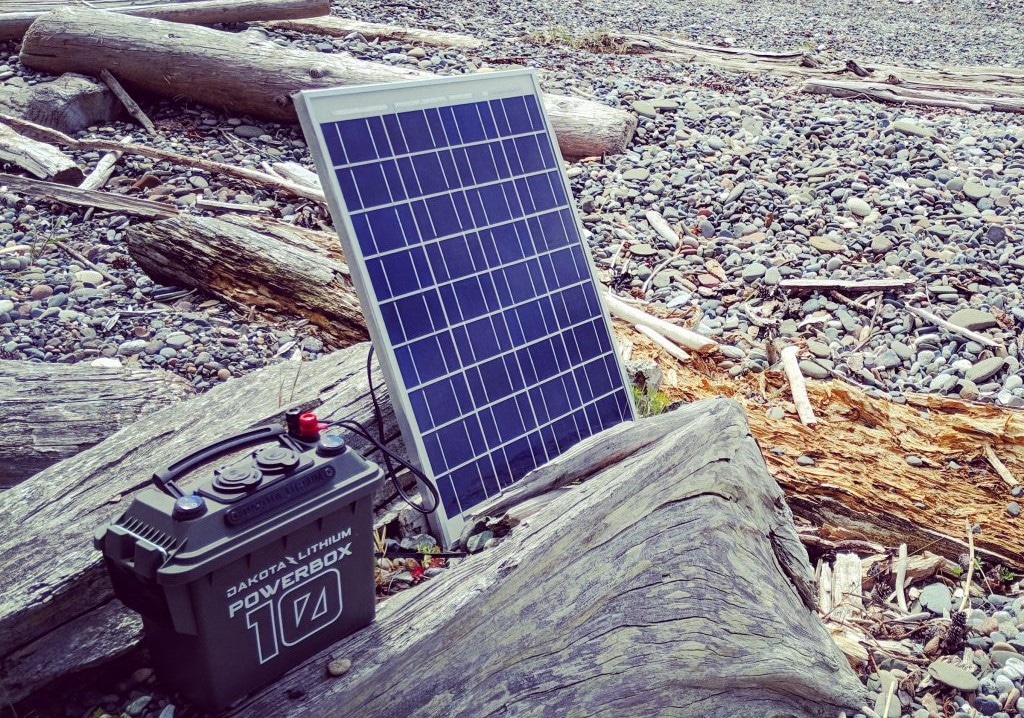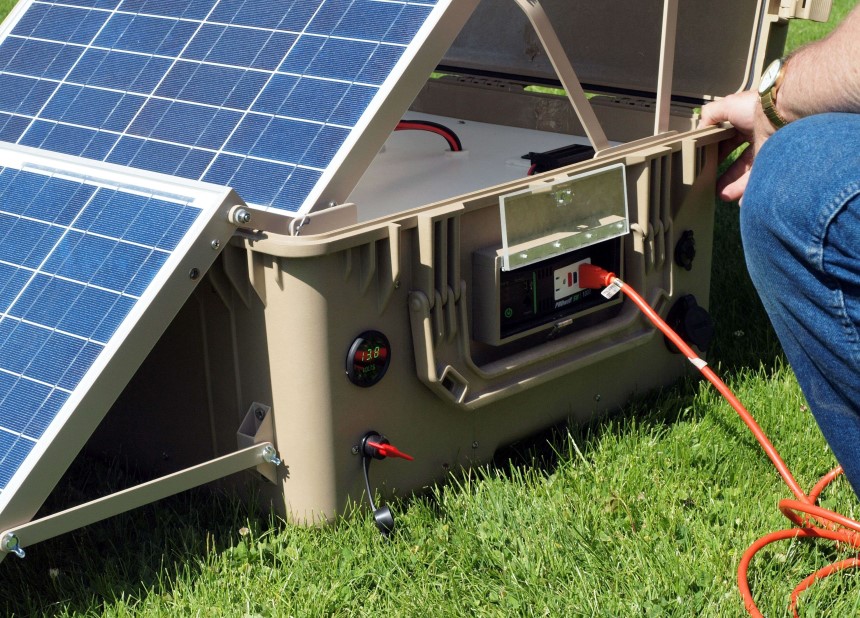Did you know that converting to solar power not only saves you money on your energy bill but also aids in fighting greenhouse gas emissions? Traditionally, electricity is obtained from common fossil fuels such as natural gas and coal. Switching to solar power reduces our dependence on these fossil fuels.
However, the main query potential solar panel users have is the lack of available sunlight during the winter months. How does investing in renewable energy prevent a power deficiency when there is not enough sunlight?
The answer is quite simple and can be summed up in five words: Solar panel batteries and inverters. Investing in a battery system allows you to store substantial amounts of additional energy during the summer months for use in the winter months. This begs the next question, how to calculate solar panel battery and inverter?
If you’re going to convert to solar power Trusted Source Solar energy - Wikipedia Solar energy is radiant light and heat from the Sun that is harnessed using a range of technologies such as solar power to generate electricity, solar thermal energy including solar water heating, and solar architecture. en.wikipedia.org , you’ll have to read up on the ins-and-outs of how your batteries and inverters work. This will ensure you don’t run out of power when you need it most. So, how exactly is solar energy converted to electricity? And, where do the batteries and inverters fit in?
The panels used in solar energy are photovoltaic Trusted Source Photovoltaics - Wikipedia Photovoltaics (PV) is the conversion of light into electricity using semiconducting materials that exhibit the photovoltaic effect, a phenomenon studied in physics, photochemistry, and electrochemistry. The photovoltaic effect is commercially utilized for electricity generation and as photosensors. en.wikipedia.org (PV) which means they use convert sun rays into electricity. This happens when the photons in sunlight engage with the electrons in the silicon cells of the panels. Electricity is then created for home or commercial use.
An accredited solar panel installer will be able to advise you on the best solar panels for your home and your area. Quality, durable products will ensure your solar power system is always performing at an optimum level.
A
solar inverter
Trusted Source
Solar inverter - Wikipedia
A solar inverter or PV inverter, is a type of electrical converter which converts the variable direct current (DC) output of a photovoltaic (PV) solar panel into a utility frequency alternating current (AC) that can be fed into a commercial electrical grid or used by a local, off-grid electrical network.
en.wikipedia.org
can easily convert the direct current (DC) output of a PV solar panel into alternating current (AC). This current is then fed into a commercial electrical grid. The solar energy is then stored in the batteries for future use.
To get maximum results out of your solar energy you need to know how much load wattage you’ll need. Essentially, load wattage is the maximum amount of power your supply can provide during 100% use. In other words, how much power it will take to run everything all at once. While it’s unlikely that you’ll use that much power at one time, but preparation is essential.
Experts suggest adding at least 20% to your calculations to ensure you always have the necessary power. This is also due to home appliances needing additional power to start up. Let’s look at the calculations you need to know when you want to sustain your infrastructure with solar energy.

On average, a home that consumes 1000kWh of electricity will benefit from 26 to 30 solar panels if each panel produces 320 watts. If your energy bill reflects your electricity usage for the month, you simply add the monthly amounts for 12 months. That’ll give you the amount of kWh you use annually.
When choosing the best solar inverter for your home, you might want to consider the WZRELB DC to AC Converter Off Grid Pure Sine Wave Power Inverter Generator (2500w 12v 120v). This product offers you 5000W of pure solar power guaranteed to be as good as grid power. It’s also capable of providing sufficient backup power for your home.
It easily transfers 12VC to 120VAC, 60HZ frequency to dual US outlets. A cooling fan is regulated by an intelligent temperature control system meaning your inverter won’t overheat. This compact unit is not only portable but is ideal for camping as well. It’s easy to see why this model is regarded as one of the best solar inverters to add to your solar system.

In general, the average American household uses about 30 kWh of energy daily. A typical solar battery delivers about 10kWh of capacity. Once you know how much energy you need for a day, you’ll be able to calculate how many batteries you need in your battery bank.
To get a clearer picture of this, simply take the total power produced by the PV solar panels and divide it by the voltage of the batteries. A simple example is as follows:
“A solar panel produces 1 kW and charges a battery bank of 24V. The controller size is then 1000 / 24 which gives you 41.67 amps.”
To add to this, one or two batteries can generally provide your home with sufficient power during nighttime when your panels aren’t generating energy.
One of the solar batteries currently gaining a lot of popularity with solar energy users is the Mighty Max Battery 12V 200Ah 4D SLA AGM Battery Replacement for Solar Systems Brand Product. This rechargeable battery is not only shock-resistant but can be mounted in any position. It provides highly-rated performance in both high and low temperatures.
Since it’s also SLA/AGM spill proof, this top-quality battery is characteristically known for its high discharge rate, durability and fast discharge recovery rate. Additionally, it’s compatible with Solar and Toy devices, making it the perfect choice to sustain your solar energy!

To simplify, charging a battery at 12 volts and 20 amps, it will usually take about five hours to charge a 100 amp battery. If you multiply 20 amps by the 12 volts, you’ll need a 240-watt sized panel. Experts recommend that you use a 300W solar panel. You could also use three 100W panels.
A solar-powered system will save you countless amounts of money on your energy bill and also help you lessen your need for fossil fuel. It’s a remarkable way to decrease your carbon footprint.
To efficiently sustain your home in both the summer and winter months, it’s necessary to not only maintain your inverter and battery banks but to charge them for the correct amount of time.
Knowing how to calculate solar panel battery and inverter products will go a long way to ensuring the lights don’t go out when you least expect it!





